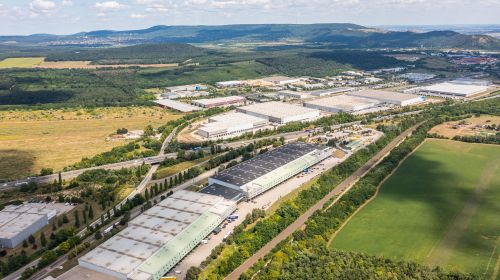The law of the land
Warehouse & industrial
Agata Zając, associate director responsible for land purchases, JLL’s industrial department: To a small degree. The amendment on the environmental protection act, which partly relates to tree felling, was actually more about the desire to protect private property rather than to create new investment sites.
What has actually prompted this massacre of trees? Have people stopped liking trees?
It’s all about the ‘I’m doing this because I can’ principle. Let’s also not forget that thanks to the changes to the regulations, removing trees from private property has not only become easier in formal terms but also cheaper, which has prompted those owners who had been putting off decisions to cut down trees because of financial issues.
So what is the problem? Perhaps it is the other restrictions on tree felling – those related to the bird nesting season?
This could be more applicable because the protection period, between March and October, has to be included in the schedule of the project. Private people generally ignore this restriction, but an investor is not really able to do that – the building site is constantly under the supervision of the building inspector, not to mention its neighbours and environmental groups. Any revelations about breaking the environmental law not only involve penalties or the suspension of the project, but is also a disaster for the company’s image – and no serious developer can afford that.
The amendment of 2016 also relaxed the rules for measuring the diameter of trees before their removal. This was simply to encourage investors and was not the first example of this.
That’s right, because in fact the first significant amendment of the act related to tree diameter measurement and tree removal came into force in the second half of 2015, but this passed quite unnoticed. The guidelines for calculating the fees for tree felling, which are aimed at using the land according to its designated purpose (according to the local zoning plan), were also amended at that time. So, removing trees from sites earmarked by the local authorities for investment became less expensive. The change was beneficial for investors, but it also contained environmental protection measures. It is also worth emphasising that the local authorities issuing permits for tree removal then ordered replacement tree planting and declined to charge these fees, either entirely or partially. The amendment of 2016, however, went much further and made it possible to remove the same trees without any permits or even reporting the fact to the local authorities. This was a very beneficial change for investors, but on the other hand there is now no real possibility of compensating for the environmental damage resulting from the tree felling carried out by investors.
Let’s discuss another amendment – last year’s act on the shaping of the agricultural system. Has it really limited the sale of agricultural land for projects?
It definitely has, particularly in the case of the owners of plots located within the administrative districts of cities – the sale of this land has virtually been blocked. However, one good result of this regulation (even though it is definitely a side effect) is the fact that many administrative districts have started to draw up local zoning plans, even though they had not done so for many years. We are currently cooperating with local authorities on preparing at least a dozen or so such documents. This particularly concerns land that used to be located out of the way but has since become more attractive to investors thanks to the development of the road network in Poland, so they will probably be put up for sale soon.
“Soon”? Such changes in local zoning plans are likely to take some time...
Not as long as you might think – in rural administrative districts it can be done within twelve months, but cities are indeed more problematic as such procedures can take between three and five years. That’s why right after the amendment there was the idea to exclude plots located within city limits from the restrictions. Unfortunately, the issue died away.
But, as you mentioned, it is an opportunity to activate new areas as destinations for warehouse developers. Which regions could become the new ‘promised land’?
They will first of all be the regions that have a suitable labour force. Large markets are drained in this respect so investors are looking less and less favourably at regions with long-term logistics traditions, because such a tradition usually signifies a problem with finding employees, even further afield. Nowadays the investor starts an analysis of the investment potential of each area designated for production by their HR department.
The construction of the A4 motorway revived the regions of Rzeszów and Przemyśl, which ceased being blank spots on warehousing maps. Which cities can follow in their footsteps?
Certainly Białystok and Lublin. The S8 road is to be completed next year, connecting the Podlasie region with the rest of Poland and Europe. It will be a similar case with the Lublin region. We are receiving more and more enquiries about these regions, particularly from the type of investors who generate lots of jobs.





















































